FP Tech Forum
Fostering greater connectivity in an increasingly fractured world
On September 21, 2022, Foreign Policy hosted its second annual Tech Forum. The Forum, which was held alongside the 77th convening of the UN General Assembly in New York City, convened leaders from government, industry, and civil society to discuss the future of tech governance and forces impacting connectivity globally. The conversations shed light on the risks associated with growing protectionism, authoritarianism, and techno-nationalism, which could fragment global markets, inhibit innovations’ potential to reach scale, and undermine the international collaboration that is needed for health, safety, and security in the digital age. In the face of ongoing challenges including the war in Ukraine and the COVID-19 pandemic, the Forum covered a range of issues related to semiconductor and high-tech supply chains and cybersecurity workforce readiness, and highlighted opportunities for diplomacy and cross-sectoral partnerships that can foster greater connectivity and advance democracy and development around the world.
Watch highlights from FP’s 2022 Tech Forum here and read on for insights from the event.
The FP Tech Forum was held in partnership with Google, IBM, Qualcomm, Meta, Illumina, Capital.com, and AARP. FP Analytics produced this synthesis report with support from Google.
The Role of Digital Diplomacy in an Increasingly Fractured World
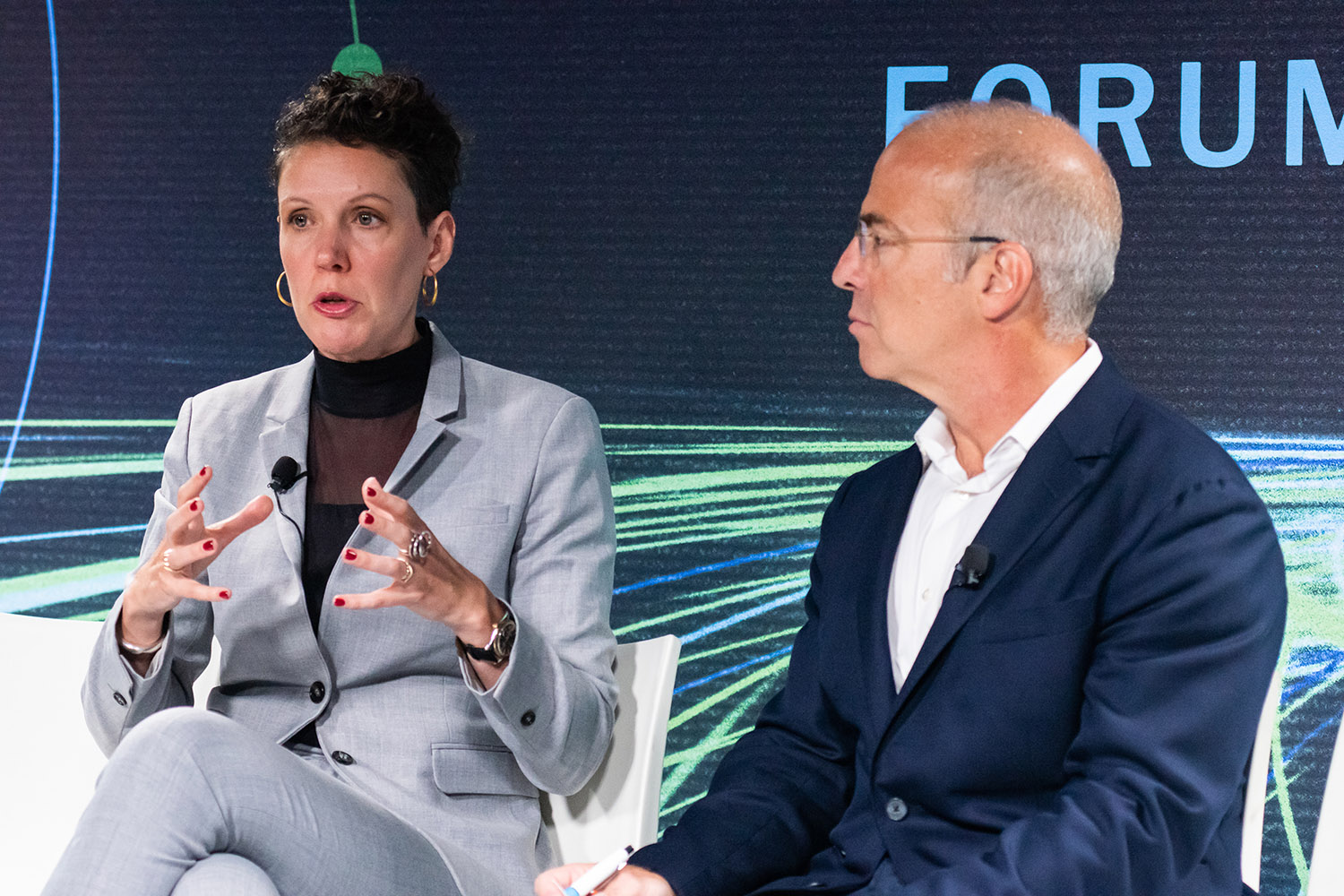
Participants
Ambassador Anne Marie Engtoft Larsen, Danish Tech Ambassador
Moderator: Andrew Sollinger, Publisher & CEO, Foreign Policy
Key Takeaways
- Tech diplomacy aims to facilitate global cooperation on technological trends shaping a digitized world. It seeks to address cybersecurity and technology challenges related to internet governance, peace and security, human rights, trade, and economic development.
- Mis- and disinformation are increasingly being weaponized by authoritarian governments to undermine the core pillars of democracy. Multistakeholder collaboration across governments, tech companies, civil society, and multilateral organizations can help to ensure that technology is leveraged to promote democratic values and ideals.
- Governments are lagging on tech regulation and need to collaborate with the tech industry to proactively address new challenges from emerging technology areas such as artificial intelligence, quantum computing, biotechnology, and the metaverse. Particular attention to environmental, social, and economic aspects will be critical to ensure that societies have a meaningful, inclusive online experience.
Additional INSIGHTS FROM FP ON Digital Diplomacy
- FP Virtual Dialogue: Foreign Policy in the Age of Artificial Intelligence
- FP Editorial: The Fight for Ukraine Is Forging a New World
- FP Analytics Report: Information Warfare in Russia’s War in Ukraine
Cybersecurity and Democracy
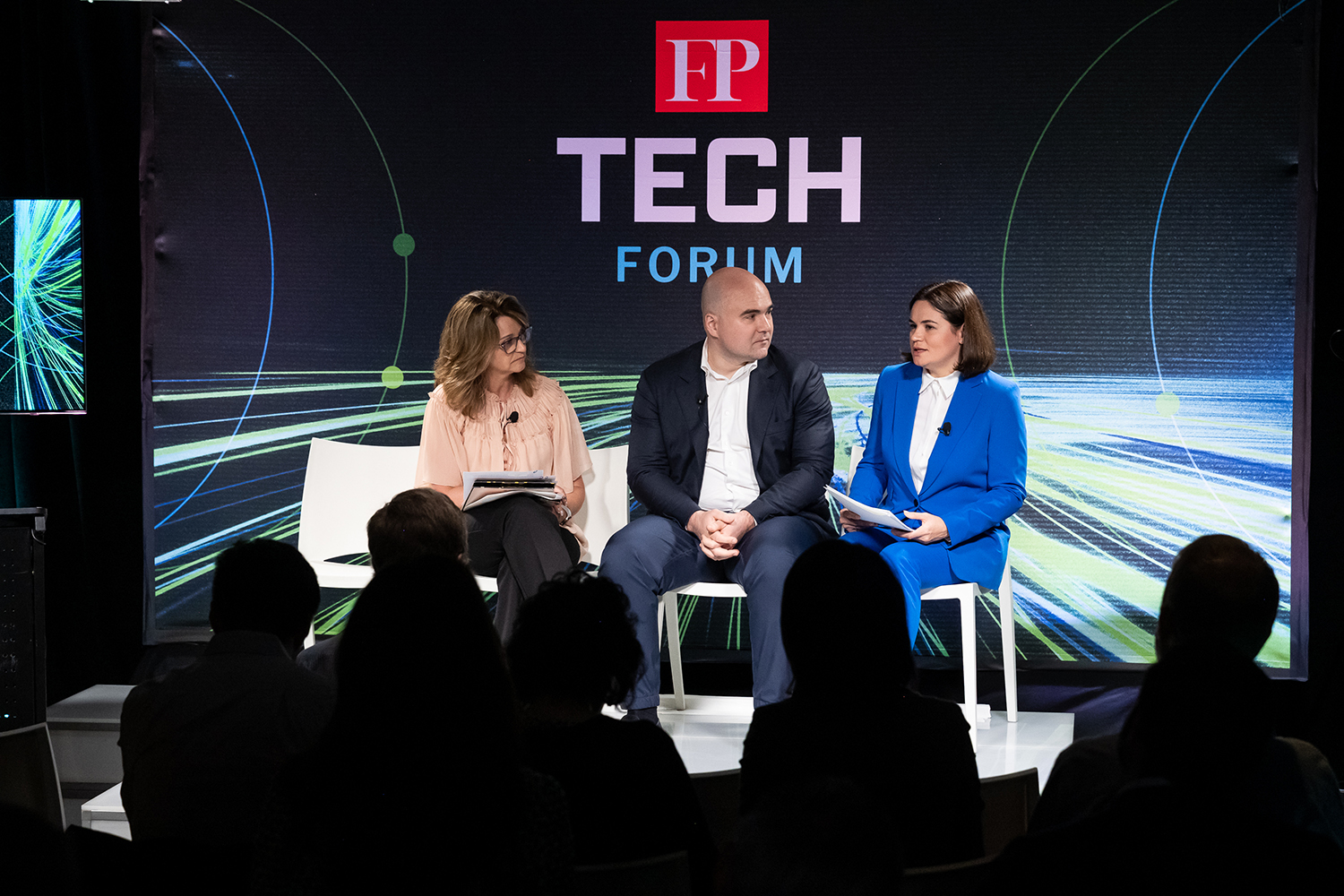
Participants
Victor Prokopenya, Founder, Capital.com
Sviatlana Tsikhanouskaya, Leader, Belarusian Opposition
Moderator: Maggie Lake, Veteran Journalist and Founder, Maggie Lake Media
Key Takeaways
- In an increasingly interconnected world, companies are facing heightening risks of cyberattacks, especially during times of conflict, such as in Ukraine. Such attacks demonstrate the escalating use of cyber tools and a willingness by state actors to target public and private infrastructure.
- Tech companies have an important role to play in protecting and strengthening democratic values and ideals by providing hardware and critical services such as satellite communications in tightly controlled information spaces.
- Despite challenges, information and communication technologies and platforms are largely serving as useful tools to strengthen democratic efforts and institutions—from collecting information online about Russian troop movements in Belarus and Ukraine to using new technologies to create an alternative vote-counting system.
Additional insights from FP ON CYBERSECURITY AND DEMOCRACY
- FP Live: A Conversation with Belarus Opposition Leader Sviatlana Tsikhanouskaya
- FP Editorial: Belarus’s Unlikely New Leader
- FP Virtual Dialogue: Uniting Political Parties to Defend Democracy
- FP Analytics Special Report: Navigating Through Turbulence
Technology for a Greater Global Connection
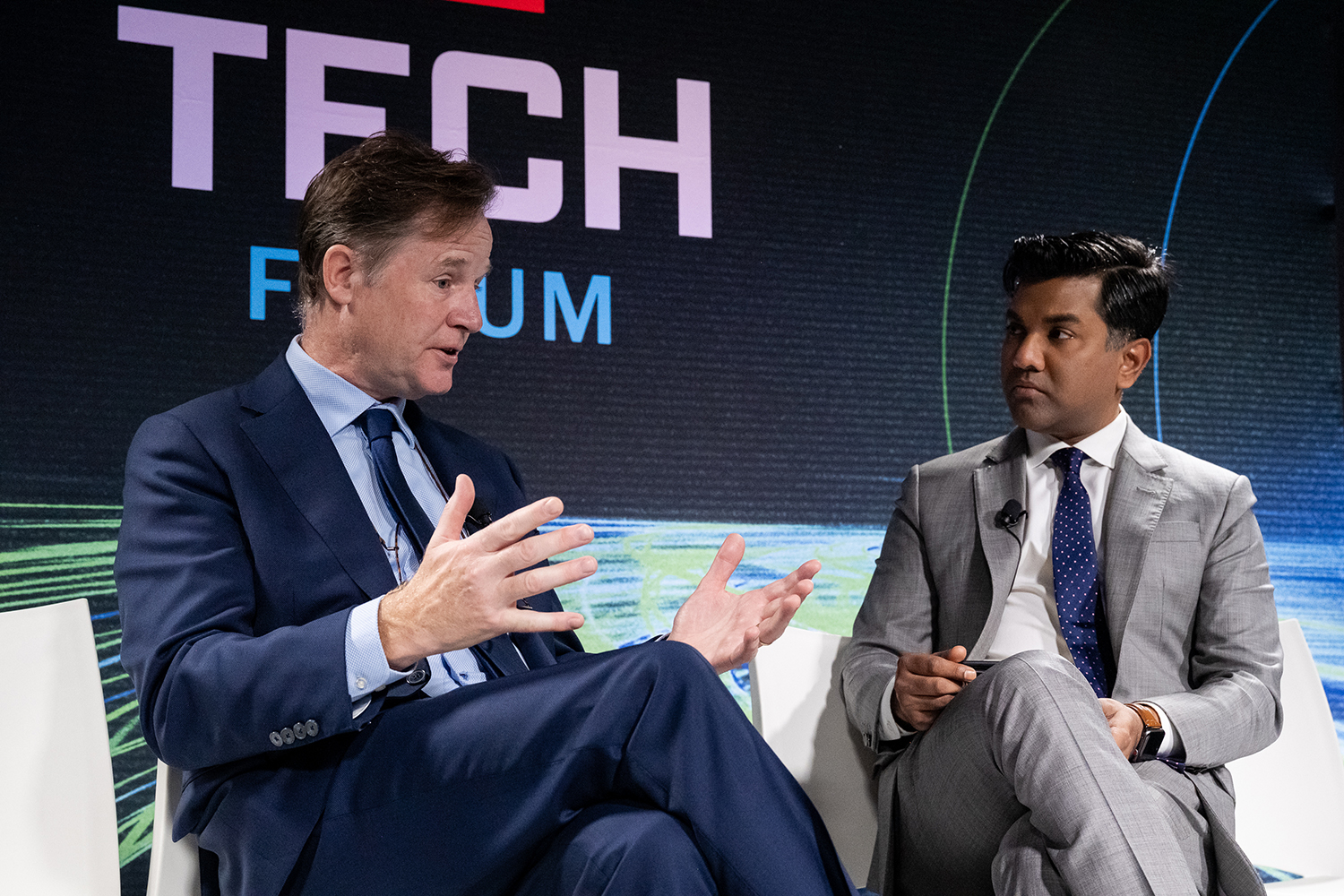
Participants
Nick Clegg, President, Global Affairs, Facebook
Moderator: Ravi Agrawal, Editor-in-Chief, Foreign Policy
Key Takeaways
- Data fundamentally differs from commodities such as oil in that it is not a fungible good and the quality of data collected matters significantly to its utility and impact on the global community.
- Public-private sector partnerships are central to addressing issues related to privacy, cybersecurity, and content moderation.
- There is a lack of uniformity across countries regarding content moderation, and a need to develop rules to encompass a diversity of languages and cultures around the world.
Additional insights from FP ON GLOBAL CONNECTION
- FP Virtual Dialogue: Bridging the Digital Divide
- FP Editorial: How Twitter Failed Africa
- FP Analytics Power Map: 5G Explained
- FP Analytics Power Map: Global Data Governance
Enhancing Digital Inclusion
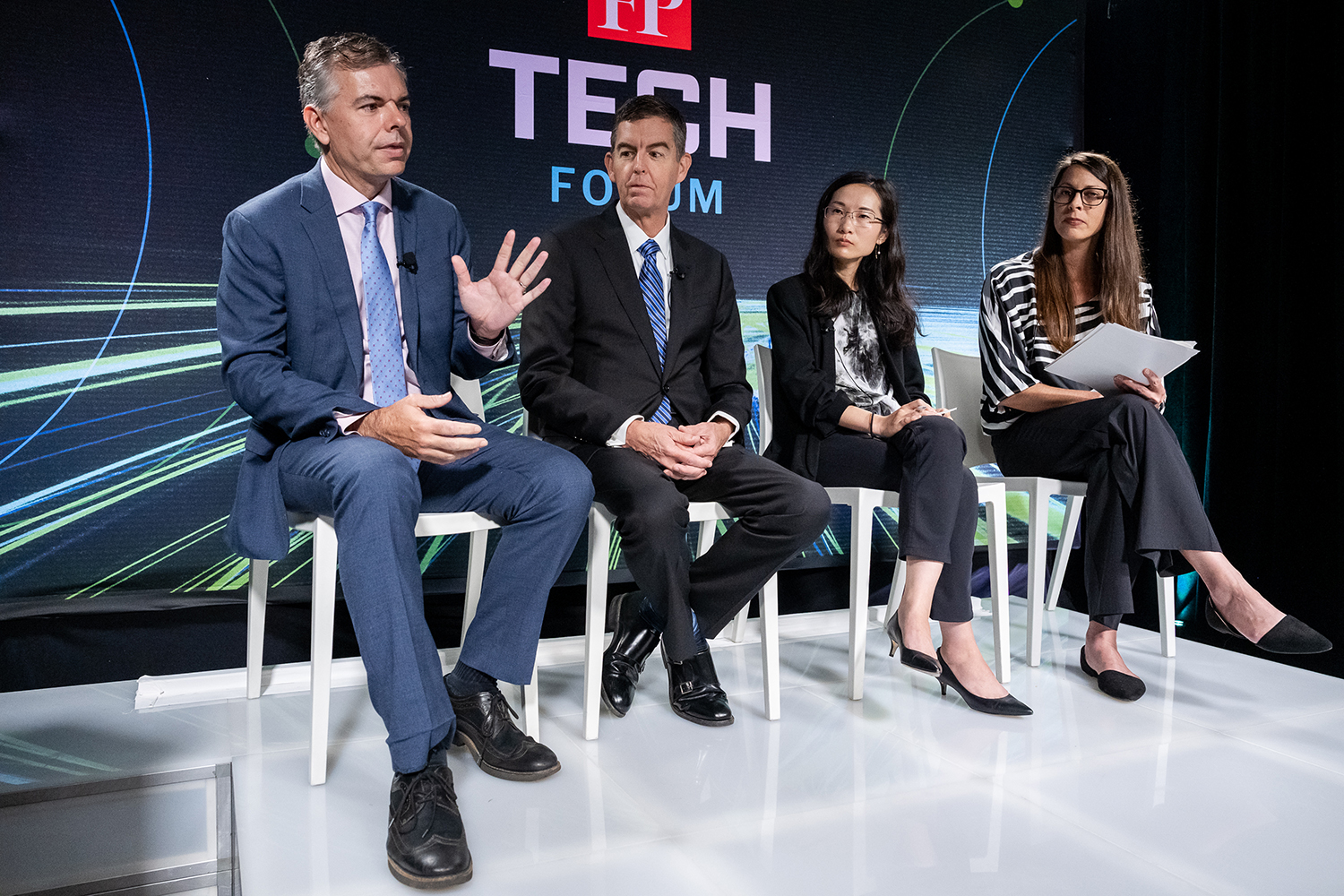
Participants
Michael Phillips, Director, Technology Strategy & Relationships, AARP
Paul Mitchell, Chair, Multistakeholder Advisory Group (MAG), UN Internet Governance Forum
Yolanda Jinxin Ma, Head of Digital Diplomacy and Global Partnerships, UNDP
Moderator: Allison Carlson, Managing Director, FP Analytics and Events
Key Takeaways
- Thirty-seven percent of the world’s population—approximately 2.9 billion people—are not connected to the internet, and 96 percent of those people are in developing countries. Older adults are over-represented among those who are not connected to the internet.
- Governments need to design strategies, develop tools, and allocate resources to reach marginalized communities most effectively, including older adults, to expand internet connectivity. To that end, concerted action will be required to overcome barriers related to infrastructure, affordable access, skills, and literacy training.
- There are three layers of inclusive design and investment. The first is investing in infrastructure to enable a digital environment to bring in different communities. The second is investing in people by bringing them into the policymaking process to create a digital economy strategy based on what marginalized communities need. The third is investing in the ecosystem to ensure that there are incentives in place for different stakeholders to come together to address digital inclusion jointly.
Additional insights from FP ON DIGITAL INCLUSION
- FP Analytics Synthesis Report: Expanding Digital Inclusion for Aging Populations
- FP Virtual Dialogue: Bridging the Digital Divide
- FP Virtual Dialogue: Women, Peace, & Security for the Digital Age
Technology and Global Health
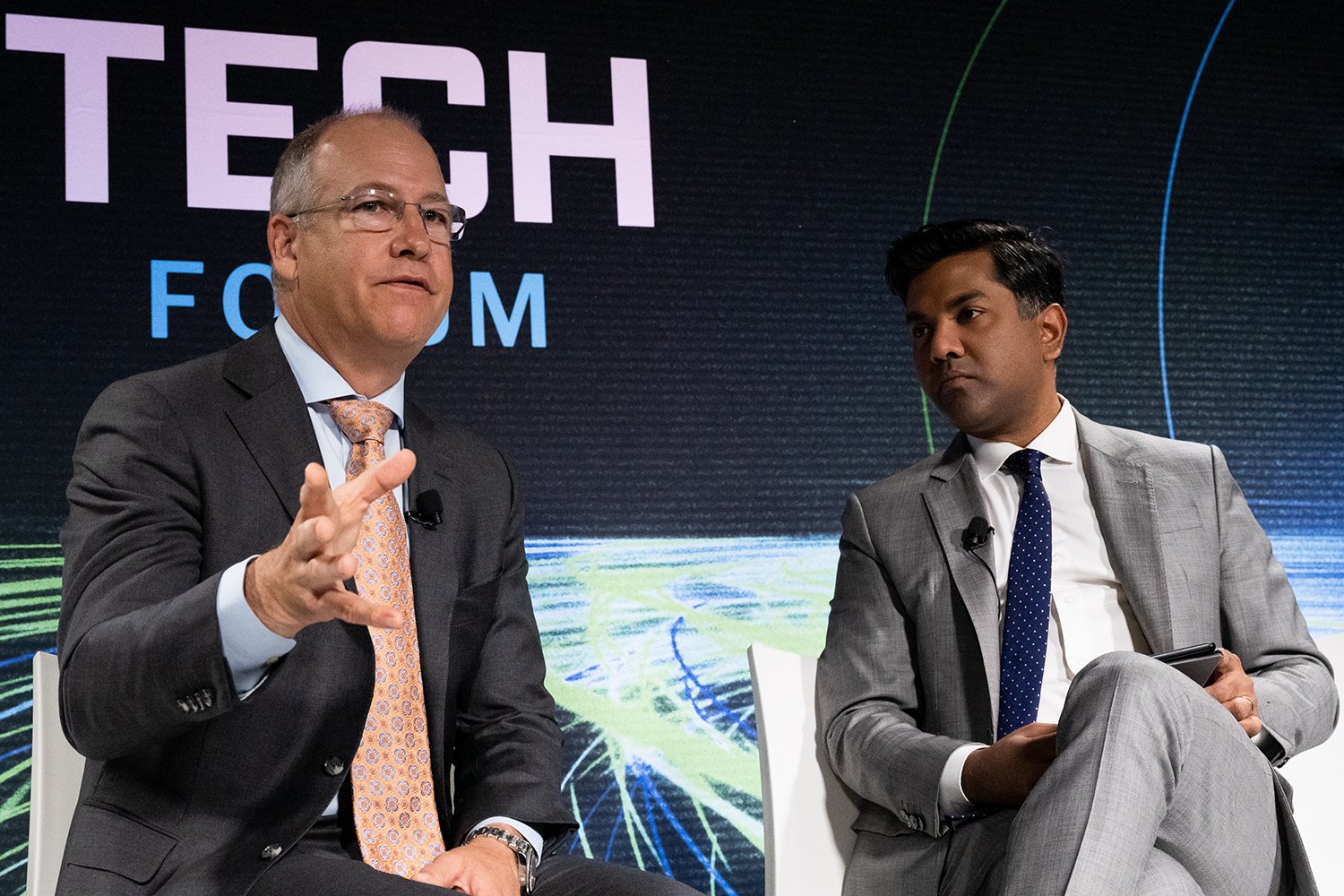
Participants
Phil Febbo, Chief Medical Officer, Illumina
Moderator: Ravi Agrawal, Editor-in-Chief, Foreign Policy
Key Takeaways
- Gene sequencing is playing a vital role in the global public health response to the COVID-19 pandemic by tracking changes among the variants to better inform diagnostics, vaccine development, and treatment.
- Increased access to genomic technology and data, particularly in low- and lower-middle-income countries, is crucial to addressing global health equity. Equitable access to genomics relies on capacity-building, sustainable investments in the workforce and local infrastructure, and public-private partnerships.
Additional insights from FP ON TECHNOLOGY AND GLOBAL HEALTH
- FP Editorial: The Next Pandemic Doesn’t Have to Hit So Hard
- FP Event: Investing in African Health Security
- FP Global Health Forum
- FP Virtual Summit: Women in Global Health Security
Strengthening the Tech Workforce
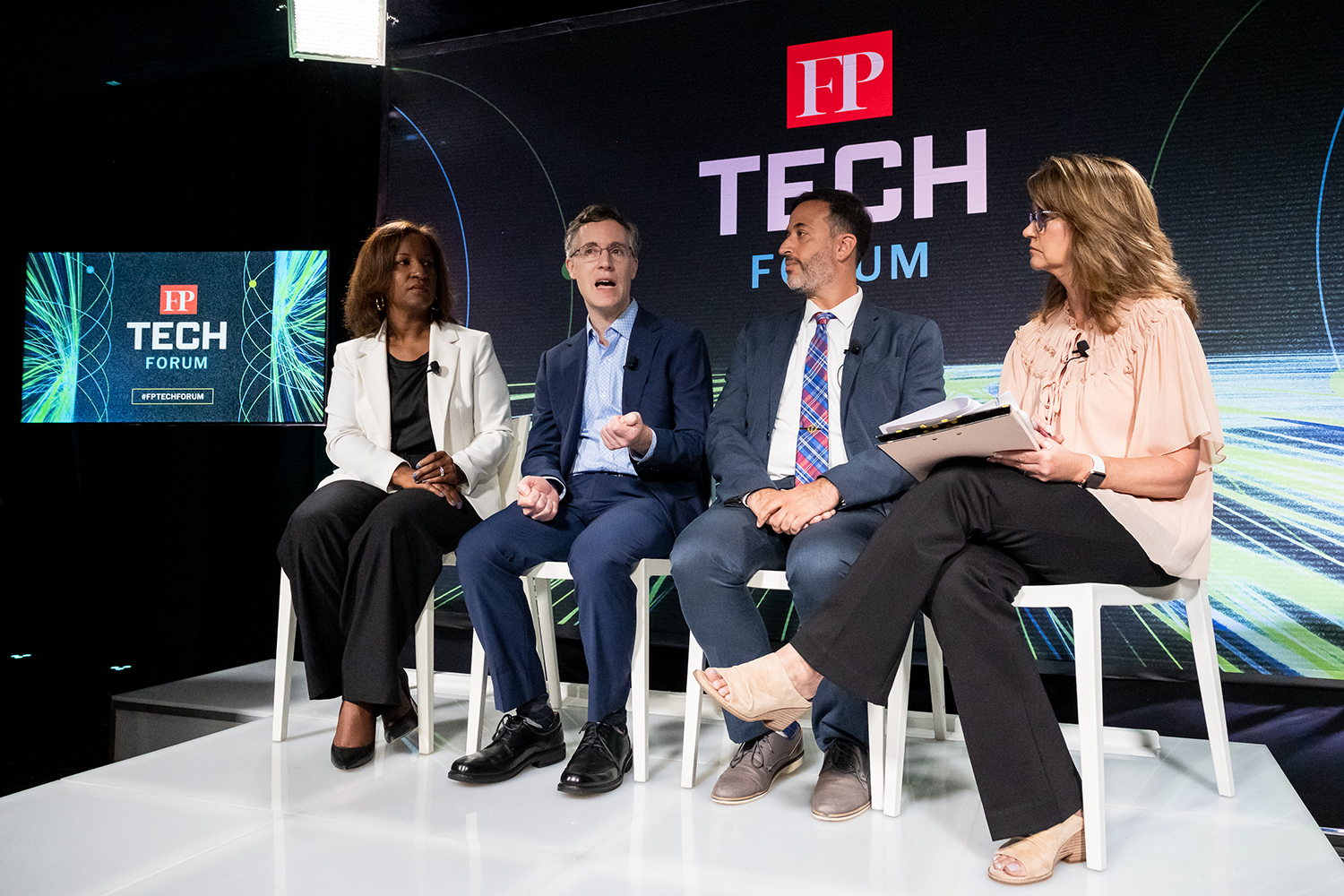
Participants
Justina Nixon-Saintil, Vice President, Corporate Social Responsibility and ESG, IBM
Jonathan Finkelstein, Founder and CEO, Credly
Rob Seidner, Director of Government Partnerships, edX
Moderator: Maggie Lake, Veteran Journalist and Founder, Maggie Lake Media
Key Takeaways
- Over one billion jobs will be “radically transformed” by technology by 2030 because of technological advancements. The public and private sectors need to ensure that the global workforce can adapt to acquire the basic skills to be successful in an increasingly digitally driven world.
- Partnerships and trust are central to strengthening the tech workforce, especially for those who need to be reskilled and cannot rely on conventional degrees. Civil service and the public sector have an opportunity to change job requirements and provide skills training that could ultimately improve internet governance.
Additional insights from FP ON THE TECH WORKFORCE
- FP Editorial: The U.S. Needs a Million Talents Program to Retain Technology Leadership
- FP Editorial: Western Companies Can Help Ukraine by Sending Work
- FP Editorial: How to Fix Big Tech’s Diversity Problem
Video Interview

Participants
Linda Thomas-Greenfield, U.S. Ambassador to the UN
Moderator: Ravi Agrawal, Editor-in-Chief, Foreign Policy
Key Takeaways
- Against the backdrop of the ongoing war in Ukraine, there are growing concerns that cyberattacks can be used as a “short of war” tactic, in times of both conflict and peace. The UN’s Envoy on Technology will be an important leadership role to evaluate what possible approaches and solutions there are for countries to protect themselves from state-sponsored cyberattacks.
- In addition to undermining democratic institutions and leaders, mis- and disinformation are being weaponized by Russia on online platforms, and in international forums such as the UN, to spread false information about the role of international sanctions in worsening global food insecurity. For example, despite some claims to the contrary, agricultural products coming from Russia, such as wheat, are not subject to sanctions.
Additional insights from FP
- FP Live: America and the United Nations
- FP Q&A: ‘Russians Are Feeling the Pressure’
- FP Editorial: Gumbo Diplomacy Comes to Turtle Bay
- FP Editorial: Inside Joe Biden’s Foreign-Policy Worldview
Geopolitics and the Battle Over Chips
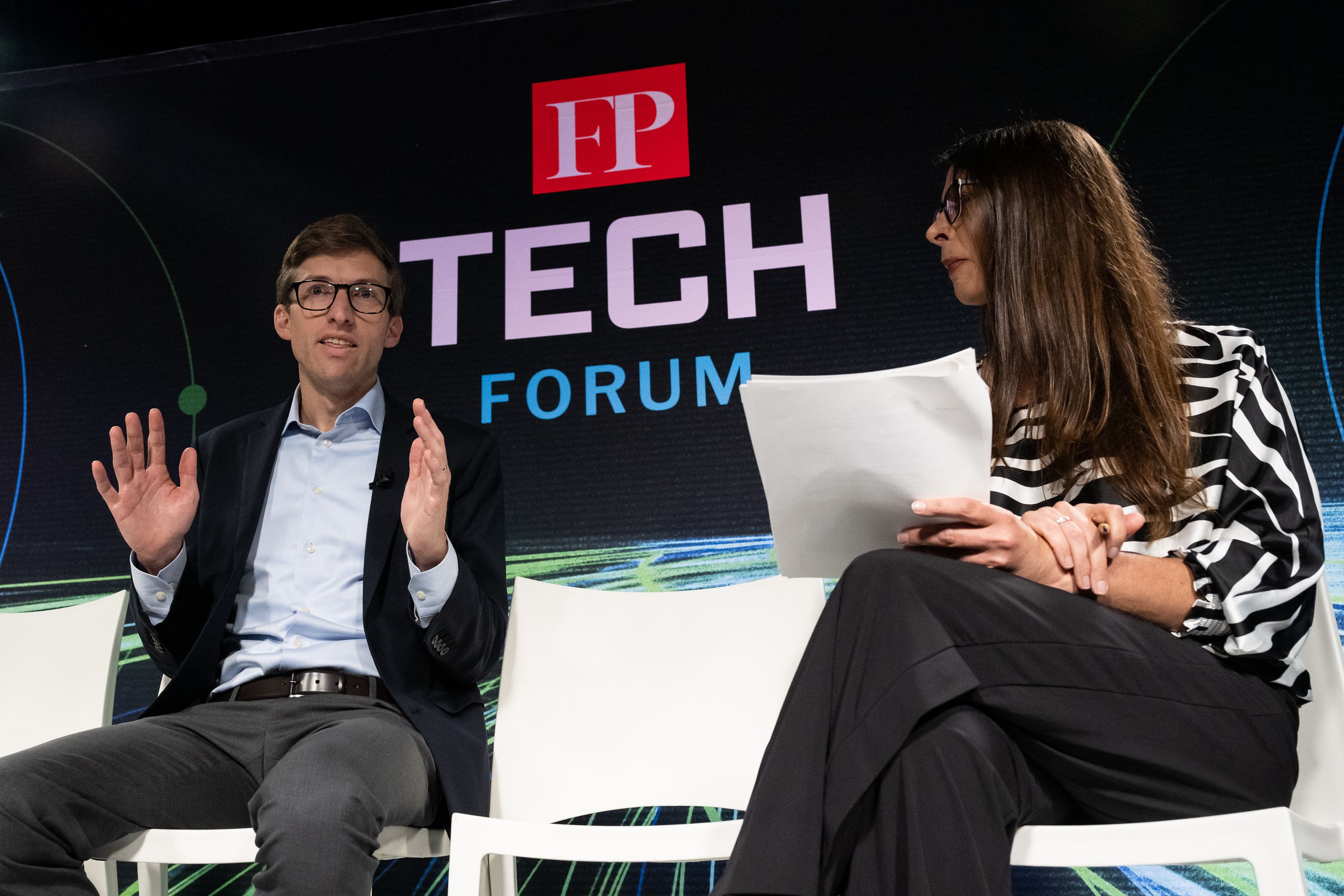
Participants
Chris Miller, Author, Chip War
Moderator: Allison Carlson, Managing Director, FP Analytics and Events
Key Takeaways
- China is trying to move up the semiconductor value chain, where the U.S., Japan, South Korea, and Taiwan currently dominate, by investing billions of dollars into its domestic manufacturing capabilities. However, its progress is limited due to constrained access to key technologies and personnel.
- One key challenge for U.S. policymakers is how to manage the global supply chain to ensure cost-effective chip production while mitigating China’s access to critical semiconductor technology, which the Chinese Communist Party (CCP) can use to advance its civil-military fusion strategy.
- One under-appreciated risk to the semiconductor supply chain is the potential for conflict in the Taiwan Straits. Ensuring diversification of the supply chain to move away from East Asia could help mitigate supply chain disruption risks.
Additional insights from FP ON CHIPS
- FP Analytics Special Report: Semiconductors and the U.S.-China Innovation Race
- FP Editorial: The United States and India Need a Digital Handshake
- FP Editorial: Technology Controls Can Strangle Russia—Just Like the Soviet Union
- FP Editorial: Can the CHIPS Act Put the U.S. Back in the Game?
Strengthening Semiconductor and High-Tech Supply Chains

Participants
Stephen Ezell, Director, Global Innovation Policy, Information Technology & Innovation Foundation (ITIF)
Susan M. Armstrong, Senior Vice President, Engineering, Qualcomm Inc.
Moderator: Allison Carlson, Managing Director, FP Analytics and Events
Key Takeaways
- The key chokepoints in the global semiconductor supply chain are due to industry decisions to prioritize economic efficiency over resiliency. Doing so has left the world exposed to numerous threats posed by climate change and conflict, but little has been done to build resiliency into the system.
- In the short term, it is unlikely that countries will shore up all semiconductor manufacturing domestically. However, leveraging partnerships with other countries such as those in Asia, Latin America, and Europe will be helpful for the U.S. to strengthen the workforce and improve manufacturing capability and capacity.
Additional insights from FP ON HIGH-TECH SUPPLY CHAINS
- FP Analytics Report: How Will New Export Controls Impact the Global Semiconductor Shortage?
- FP Editorial: The Inflation Reduction Act Is the Start of Reclaiming Critical Mineral Chains
- FP Editorial: Race to the Bottom: Deep Sea Mining Is the Next Frontier
- FP Analytics Special Report: Mining the Future
Video Interview
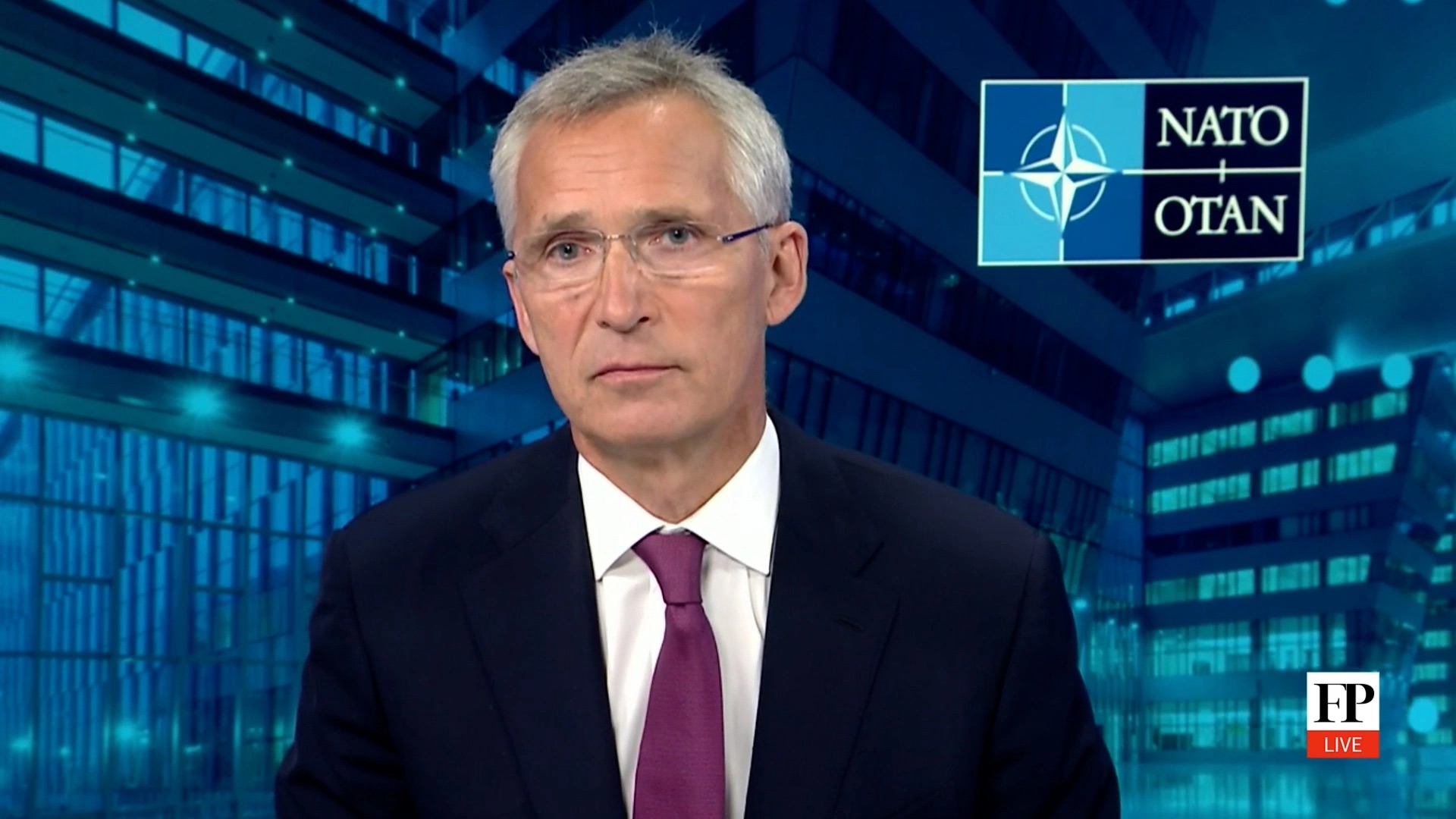
Participants
Jens Stoltenberg, NATO Secretary-General
Moderator: Ravi Agrawal, Editor-in-Chief, Foreign Policy
Key Takeaways
- NATO’s increased focus on China does not change the organization’s purpose. NATO is increasingly focusing on the global threats and challenges China’s presence and activities in the Arctic and Africa poses, as well as its recent efforts to control critical infrastructure may have on transatlantic security.
- Competing technologically with China requires public-private partnerships. NATO, for example, is working with start-ups and major tech companies to bolster R&D in new technologies to maintain a military and technological advantage.
- As sanctions severely limit Russia’s access to critical technology such as semiconductors, NATO is actively monitoring the war in Ukraine for potential cyberattacks on critical military and civilian infrastructure.
Additional insights from FP
- FP Live: An Interview with NATO Chief Jens Stoltenberg
- FP Editorial Q&A: NATO’s Stoltenberg: Ukraine’s Gains Are ‘Extremely Encouraging’
- FP Editorial Q&A: U.S. Ambassador to NATO: New China Strategy Is a ‘Big Deal’
- FP Editorial: It’s Time to Throw NATO’s Door Wide Open
Tech and Democracy
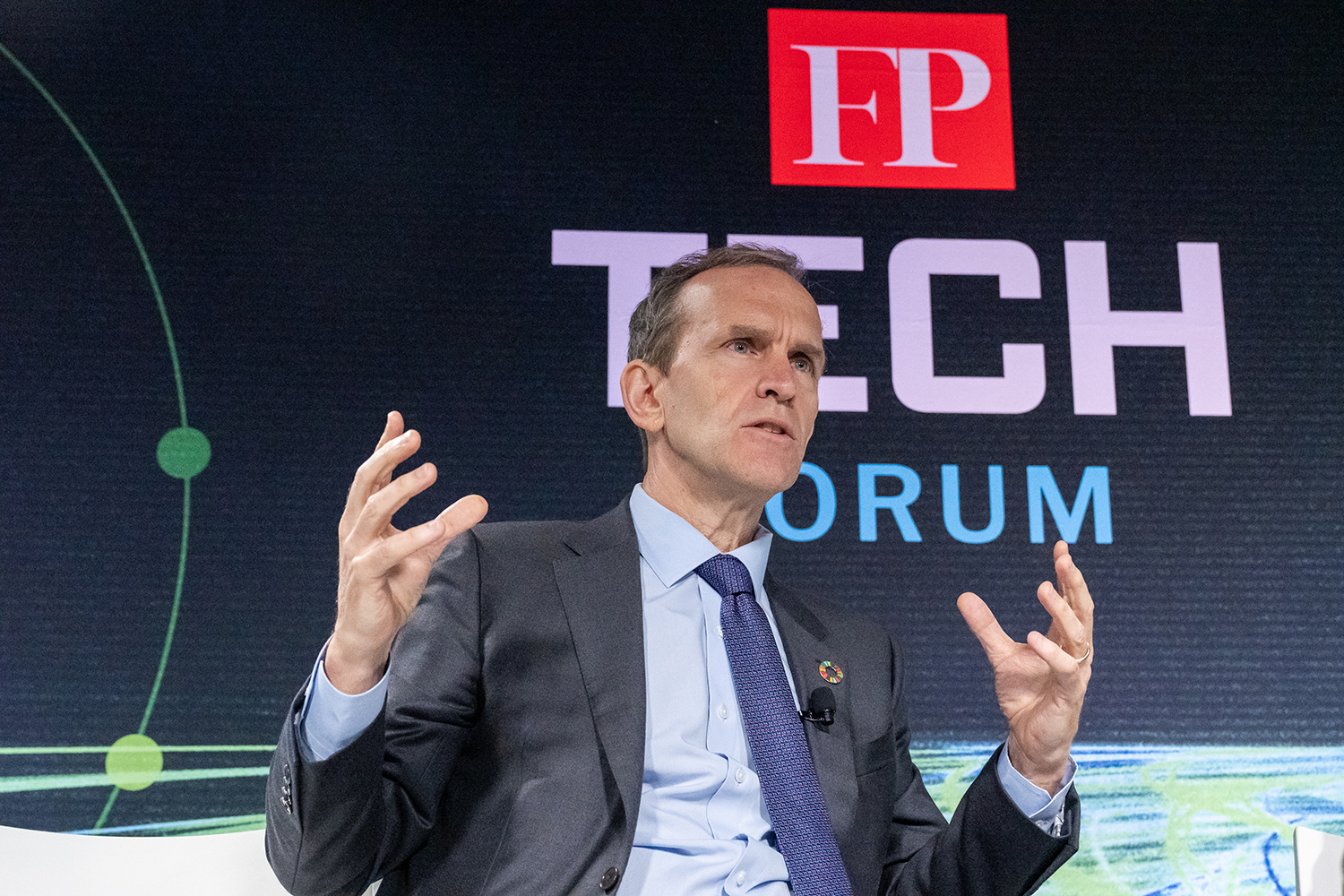
Participants
Kent Walker, President, Global Affairs, Google
Moderator: Ravi Agrawal, Editor-in-Chief, Foreign Policy
Key Takeaways
- It’s not enough for democracy to deliver for its citizens, it has to inspire. Now more than ever, private and public sector partners need to work together to ensure the benefits of technology are widely shared. People need to feel as though technology, and by extension, democracy is working for them.
- The top priorities for internet governance are content moderation, privacy, competition, and global taxation. But navigating these areas requires thoughtful consideration of trade-offs across competing policy goals. For example, privacy rules restricting data sharing can clash with competition rules promoting data portability and open access. And rules seeking to promote free expression and access to information can conflict with rules seeking to eliminate offensive content.
Additional insights from FP ON TECH AND DEMOCRACY
- FP Analytics Issue Brief: Defending Democracy in the Digital Age
- FP Editorial: 10 Ideas to Fix Democracy
- FP Editorial: Cuba Needs a Free Internet
- FP Analytics Report: Why China’s New Data Security Law Is a Warning for the Future of Data Governance
FP Analytics produced this synthesis report with support from

